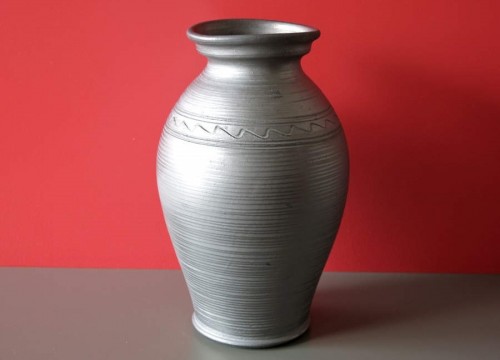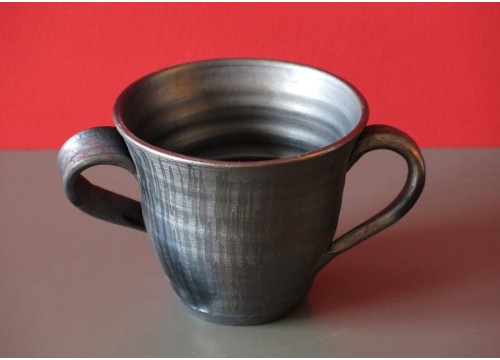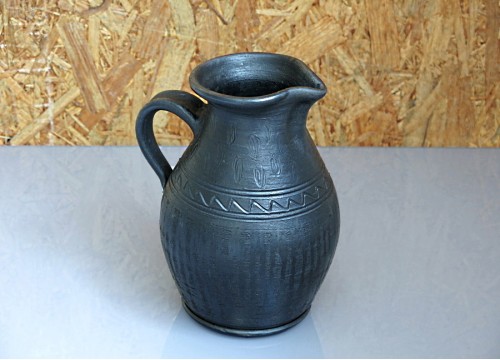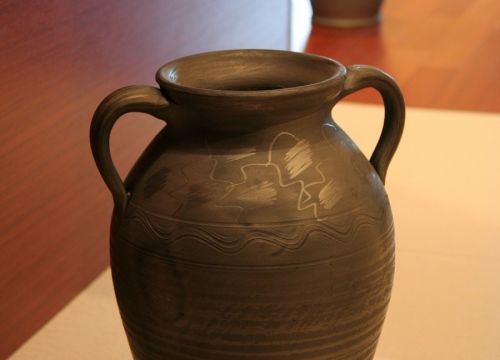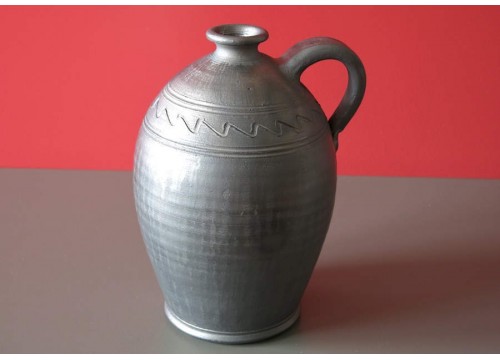
| You have no items in your shopping cart |
Transportation cost: Poland: 14 - 16 zł, Worldwide: from 22 zł

| You have no items in your shopping cart |
Dark - grey mug with one handle, an example of grey ceramics – pearl of East Region – the most unique and the oldest kind of Polish ceramics, which at present is very rare. It will not only constitute an impressive element of decoration in both modern and traditional interiors, but also can be practically used. Grey ceramics is hand manufactured with application of traditional XVIII-century old method. The author kept ornaments typical for „siwaki”. Owing to grinding the mug with a field flint, it reflects the light, giving unrepeatable effect. It is well worth to pay special attention to proportions of the shape of this vase. Mug’s originality can be recognized owing to oval, brighter traces on its surface – they pose an effect of traditional way of burning the vessel.
See interior architect’s ideas for taking advantage of „siwaki” in space arrangement – inspirations.
Pottery workshops in Czarna Wieś Kościelna have been cultivating the XVIIIth century traditions of grey pottery handicraft using the same adornments and pot shapes in accordance with the tradition passed on to the consecutive potters’ generations. It is worth emphasizing that every potter has got their own pattern and adornments.
Grey ceramics is the most unique pottery and has the oldest traditions in Poland. Grey pots – in other words dishes manufactured with the use of that technique - appeared on the Polish soil already in the ancient times. They can be traced back to Łużyce culture (1300 – 500 B.C.), Celtic (the IIIrd century B.C.) as well as excavation works from the Roman times (0 – 400 A.D.). What is interesting, polished ornamental adornments that can be found on the dishes from Roman times are made in the identical manner as the contemporary ones. It proves the fact that the grey pots technique making has changed only slightly over centuries.
Research proves that grey ceramics was popular all over Poland. Gradually, due to glazing ceramics development, it was pushed out from different Polish regions, remaining solely in the east.
Grey pottery is produced solely in one village in Poland: Czarna Wieś Kościelna.
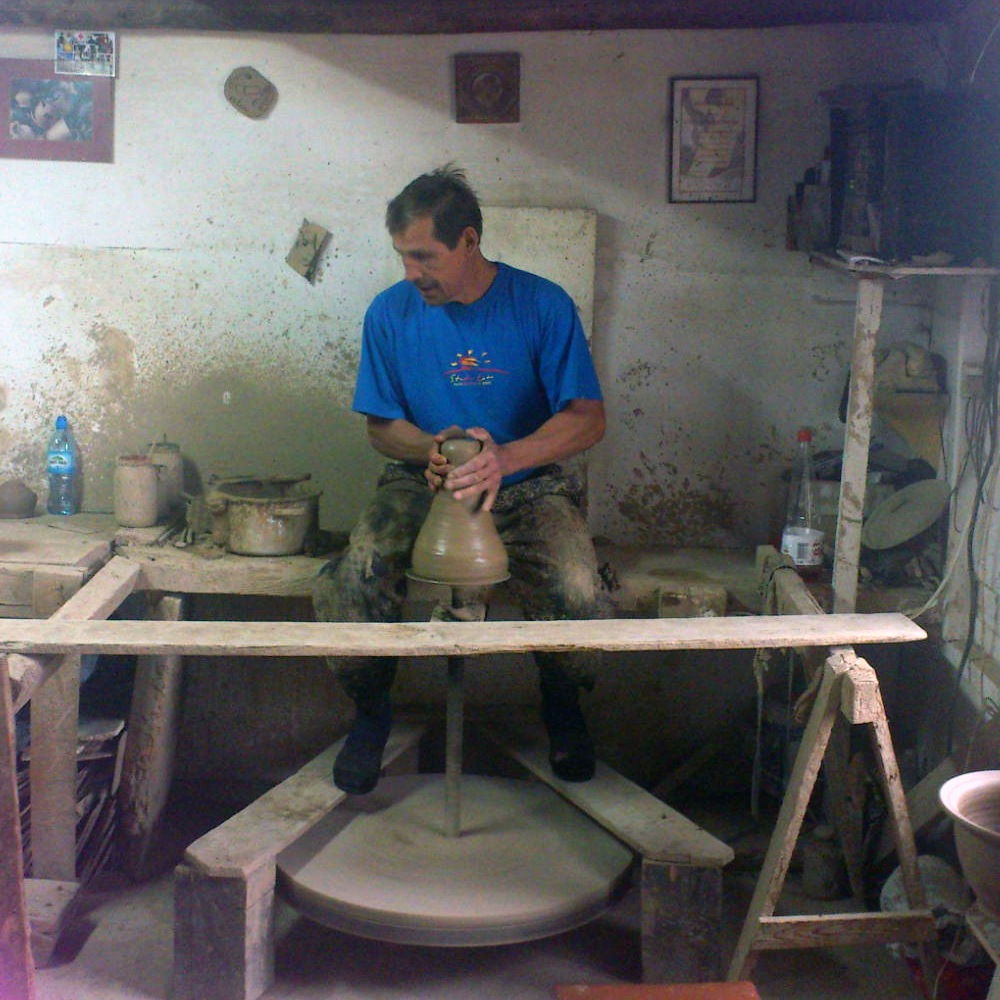 Mr Jan – a potter from the village Czarna Wieś Kościelna is a representative of the younger generation of potters. He represents the fourth generation of potters by cultivating his family traditions. That is what he says about his craft: ‘…Well, we adorn the grey pots slightly, they are burnt and glazed, after burning they have steel colour. (…). They are glazed with an ordinary flint stone. (…) When they are glazed, a totally different effect is achieved. There are patterns made in those buńka, jugs, double pots. We try to work in accordance with the XVII century traditions, thus we do not introduce any new patterns, unless for the sake of commission, the tradition has remained unchanged, as it was made by my father, my grandfather and great-grandfather. Every potter has got their own patterns, other adornments, another coating and way of paining (…) Traditional forms have remained – pots, double pots, flower pots, bowls, jugs, as they used to be made, they have remained traditional, no pattern as been added, only perhaps they used to do simpler ones.’ (the quotation comes from an article ‘Czarna Wieś Kościelna’, published on the port http://www.jarmarkjagiellonski.pl
Mr Jan – a potter from the village Czarna Wieś Kościelna is a representative of the younger generation of potters. He represents the fourth generation of potters by cultivating his family traditions. That is what he says about his craft: ‘…Well, we adorn the grey pots slightly, they are burnt and glazed, after burning they have steel colour. (…). They are glazed with an ordinary flint stone. (…) When they are glazed, a totally different effect is achieved. There are patterns made in those buńka, jugs, double pots. We try to work in accordance with the XVII century traditions, thus we do not introduce any new patterns, unless for the sake of commission, the tradition has remained unchanged, as it was made by my father, my grandfather and great-grandfather. Every potter has got their own patterns, other adornments, another coating and way of paining (…) Traditional forms have remained – pots, double pots, flower pots, bowls, jugs, as they used to be made, they have remained traditional, no pattern as been added, only perhaps they used to do simpler ones.’ (the quotation comes from an article ‘Czarna Wieś Kościelna’, published on the port http://www.jarmarkjagiellonski.pl
Grey pots making is customarily called ‘grey pots suffocating’. Dishes are rolled on a potter’s wheel. When they are formed, they are adorned. Next they have to dry for a period between a few to over dozen days. The following stage is to prepare a mini lead mixture and ground sand. A pot is covered with that mixture to ensure adequate coating density. Burning dishes in hermetically locked furnaces lasts around 13 – 14 hours. The burning temperature can reach about 950 degrees Celsius (1742 ° Fahrenheit). Only traditional furnaces can be used for grey pottery production, were charcoal is used as fuel. The grey pottery steel-shaded hue is achieved through oxygen reduction from the iron compounds, contained in clay, thanks to stopping the air inflow in the final burning phase. The smooth surface and shine is owed to so call ‘smoothing’ – which involves grinding of a partly-dried dish with an ordinary flint stone.
No customer reviews for the moment.
